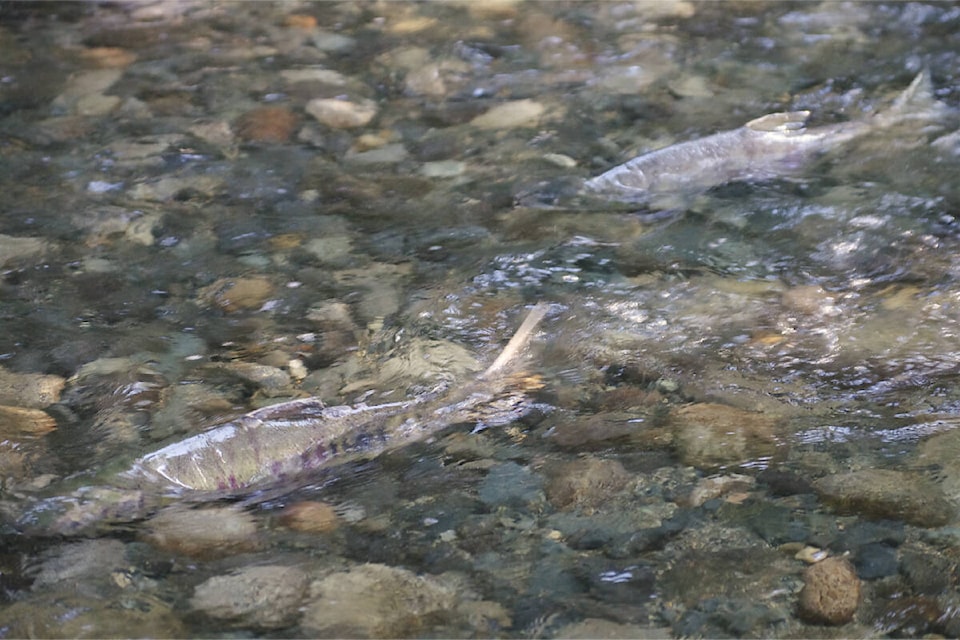By Hope Lompe, Local Journalism Initiative Reporter CANADA’S NATIONAL OBSERVER
Scientists at the University of British Columbia are experimenting with ways to keep chemicals shed by vehicle tires from entering waterways and causing widespread coho salmon deaths.
The most concerning of these chemicals is 6PPD. Developed in the 1960s and used widely in tires since the 1970s, 6PPD was first made as a tire preservative, but it has a deadly unintended byproduct: as it protects our tires, it produces a compound lethal to coho salmon called 6PPD-quinone.
For more than 50 years, tires have shed tiny toxic particles that are carried in dust through the air and washed by rainwater into streams, killing fish in urban habitats. It is so potent it is now colloquially known as the tire wear toxin.
What if, thought post-doctoral fellow Timothy Rodgers, rainfall could pass through rain gardens that would act like a Brita filter before hitting urban streams?
Under the guidance of Rachel Scholes, assistant professor of environmental systems engineering out of the University of British Columbia, Rodgers started to plan.
Rain gardens work by using soil as a filter. When water is filtered through the system, the chemical is almost entirely absorbed into the ground before it can enter streams. In soil, 6PPD-quinone breaks down over time. This makes rain gardens an effective way to mitigate the introduction of the chemical into urban coho spawning habitats.
The next step is identifying where to put these systems so that they have the biggest impact. In B.C.’s Lower Mainland, Scholes and Rodgers’ team are working on identifying these areas, partnering with municipalities including Vancouver and Surrey. Vancouver has the goal of installing more green rain water infrastructure solutions, including rain gardens, under the Rain City Strategy.
Mapping mitigation
Meanwhile, on Vancouver Island, a team from Vancouver Island University is part of a group working to map hot spots of the chemical and chart how levels change over time.
Over a six-month period they collected more than 2,000 samples between Victoria and Campbell River, with results made publicly available on their interactive map, said Erik Krogh, co-director of applied environmental research laboratories at VIU, who is partnering with the British Columbia Conservation Foundation on the project.
The team has a priority list of streams where green infrastructure mitigation efforts — such as rain gardens — should be constructed.
“What we have to do is prevent it from getting into these urban streams in the first place,” Krogh said.
“Whatever we’re going to do, we have to use cheap and readily available materials because there’s so many different roads and river crossings that we can’t afford expensive solutions here.”
The 6PPD chemical helps tires last for approximately 100,000 km for the average consumer, says Rodgers — substantially longer than the 1,000 km they would without it.
Work is underway to find replacement chemicals for tires in the U.S., but possible solutions, including other PPD variants are not perfect, Rodgers says. Even if one is found, the average consumer keeps their tire for five years, he adds, so it would take years before tires containing the chemical are circulated off roads.
“Have safer alternatives popped up? Yes. Do they look promising? Maybe,” Rodgers said.
“You could probably just replace PPD with another PPD in the short term… but I still think that in the long term that would be a mistake because these compounds still have fairly high aquatic toxicity, and they still have fairly high human toxicity.”
In the interim, mitigation is critical to manage the chemical, which claims the lives of an estimated 40 to 90 per cent of coho in urban watersheds each year. The chemical has sparked lawsuits in the U.S. and mass calls from environmental groups to enact regulatory action.
The chemical’s harms were first discovered in 2020 by Edward Kolodziej’s team out of the University of Washington. In the past four years, research has been conducted to better understand what the chemical is doing not only to coho salmon habitats, but human health as well.
A 2022 study in China reported almost 100 per cent of human urine samples contained the tire chemicals. Humans inhale the particles, and then the chemicals enter the bloodstream in a similar fashion to how they seep into creeks from roadways, Kolodziej said.
“So you have these compounds in your body, which is just another reason to pay really close attention to the safety of the chemicals we’re using and tires. We need non-toxic tires, we need salmon-safe tires, not just for salmon, but for people as well,” Kolodziej said.



